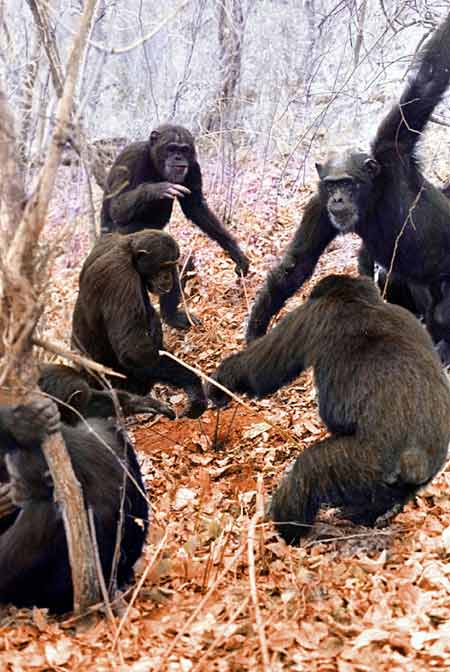Female Chimps Fight Back

Female chimpanzees in the wild form coalitions to retaliate against aggressive males, a new study reveals.
Nicholas Newton-Fisher of the University of Kent studied a community of eight adult male and 21 adult female East African chimpanzees in the Budongo Forest, Uganda. The females were subject to frequent aggression by adult males, at times the action was severe. Later, Newton-Fisher observed females retaliating in direct response to this aggression.
In almost half of his observed retaliations, the females formed coalitions of two to six members and retaliated with vocalizations, threatening gestures and direct pursuit.
Females also physically attacking males that were aggressive to other females, and on several occasions were seen to solicit the support they then received.
It is the first report of female cooperative retaliation to such aggression in the wild, according to a statement from the university.
"This strategy may reduce the incidence, severity or effectiveness of male aggression," Newton-Fisher said. "Why they do this is still unclear."
The females in the group studied tend to be more gregarious than in other populations of East African chimpanzees, he noted.
Get the world’s most fascinating discoveries delivered straight to your inbox.
"Also, the absence of similar reports from wild populations suggests that females may be able to form coalitions only under appropriate conditions—such as ecology, demography or local tradition," he said. "If groups of females are able to spend time together because of the way food is distributed in the habitat, then they are 'on-hand' to provide support and form coalitions. Whether they do this simply because they are present when another female is threatened by a male, or because they have previously formed a supportive relationship, are questions for future research."
The findings, announced today, were published in the International Journal of Primatology.



